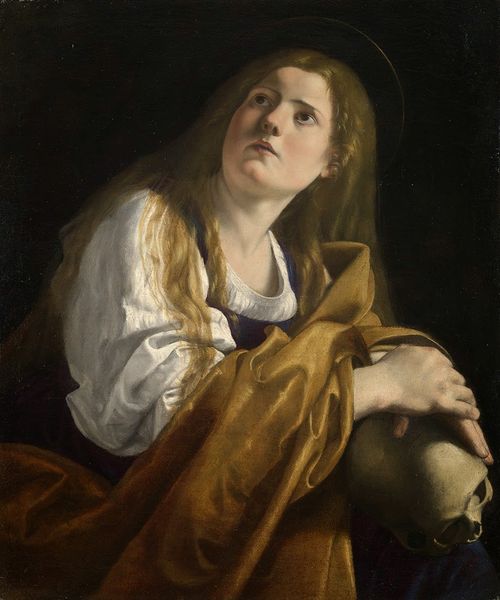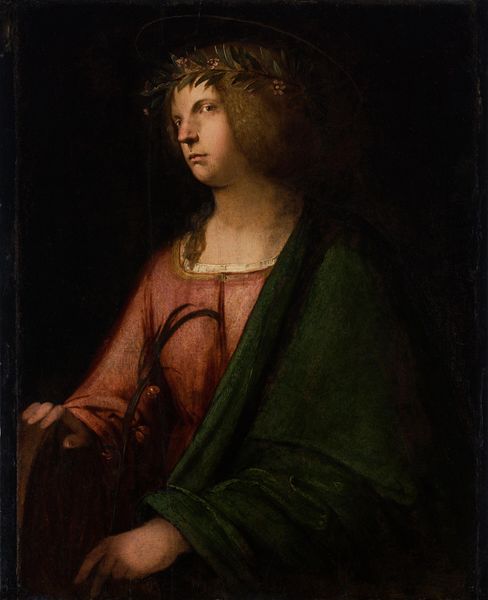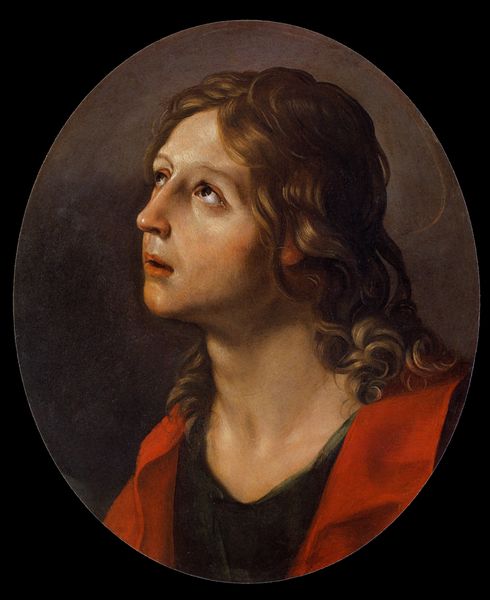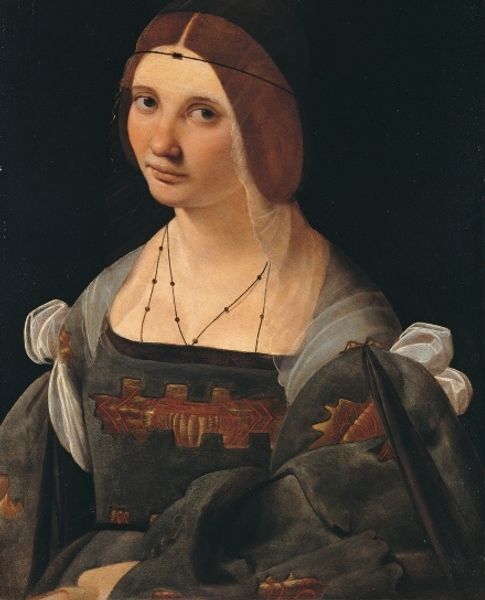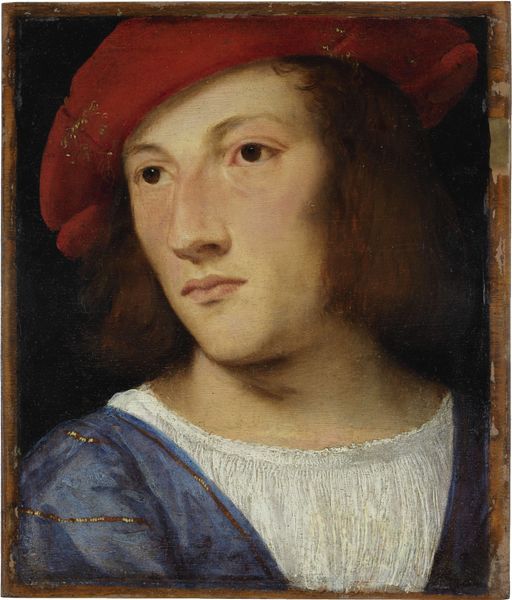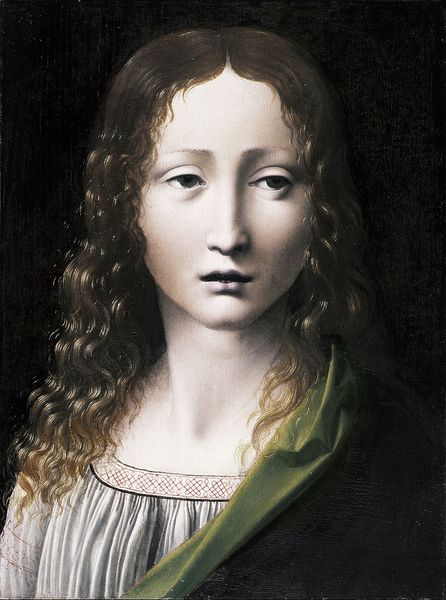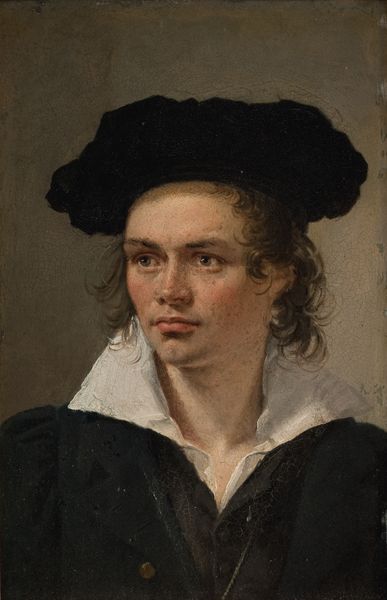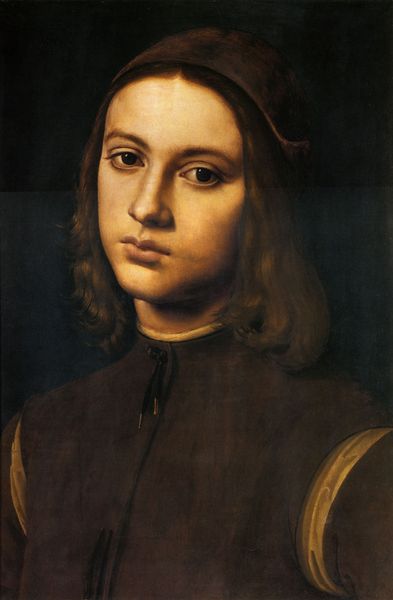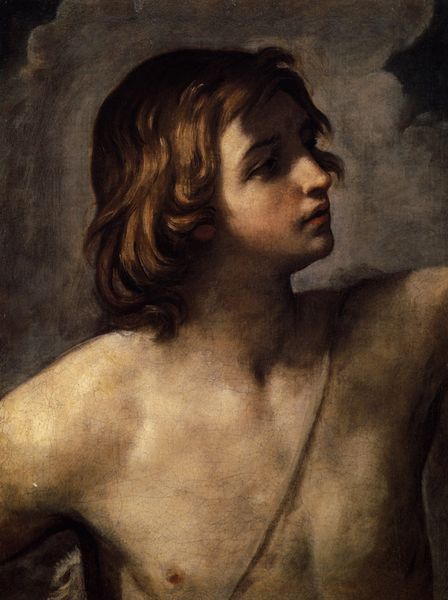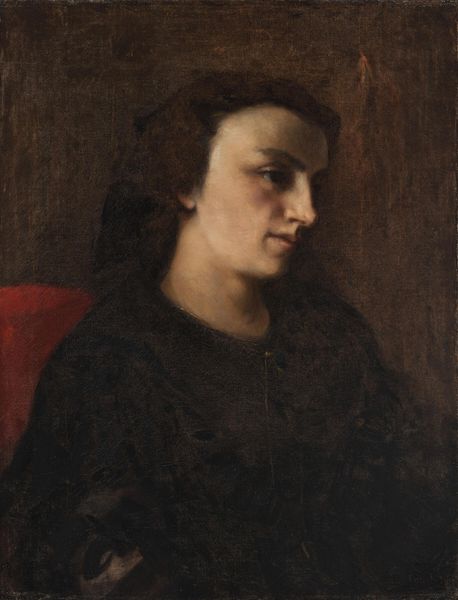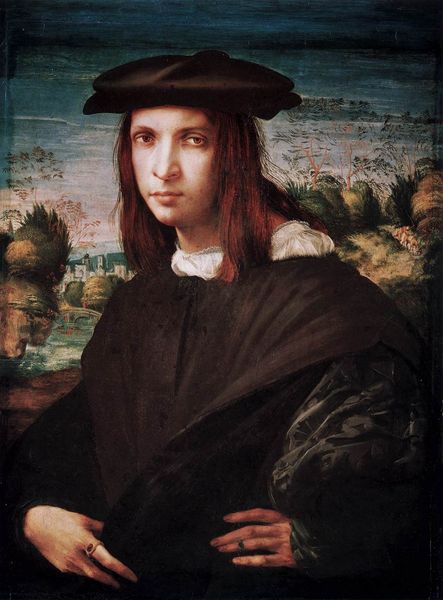
painting, oil-paint
#
portrait
#
figurative
#
painting
#
oil-paint
#
italian-renaissance
Copyright: Public Domain: Artvee
Editor: So this is Raphael's "Bindo Altoviti," painted around 1515 using oil. The young man’s gaze is intense; the overall impression for me is elegance tinged with melancholy. What visual elements stand out to you? Curator: The composition is meticulously structured, a clear example of Renaissance ideals. Observe the pyramid configuration formed by the figure, which provides a stable and balanced structure to the painting. Raphael employs a limited colour palette— predominantly blues, greens, and blacks, allowing for tonal unity. The interplay of light and shadow accentuates the subject's face, drawing the viewer’s eye to his gaze. The textures in the fabrics also enhance this sense of formal harmony. Do you see the circular composition principles here as well? Editor: I notice it now that you point it out: the hat, the shoulders and even his expression form a sense of the circle in motion. It gives dynamism and fluidity to the otherwise solemn and austere piece. Why do you think he focused more on form and texture, rather than symbolism, for example? Curator: It is more direct to relate formal composition to its emotional impact. Raphael constructs Altoviti as an ideal type through visual cues; this, rather than overt symbolism, may more accurately signal status. Editor: That makes sense. Thank you! It has given me a new way to view Raphael. Curator: Indeed! Looking at the underlying structure gives another layer to interpreting art, beyond the subject matter alone.
Comments
No comments
Be the first to comment and join the conversation on the ultimate creative platform.

